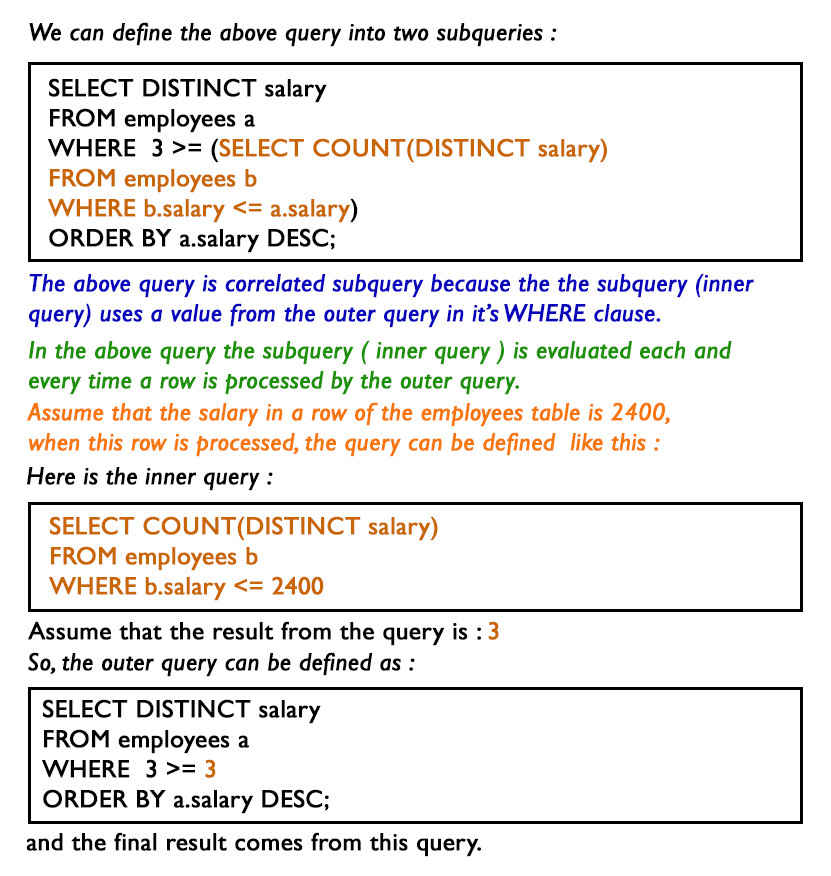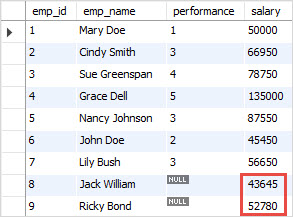
All records from the right table will be returned, as well as any records that match from the left table. Right Join: This is also referred to as the Right outer join.If there are no matching rows, the result-set (joined table) will display NULL values. It means that a query would return records from both tables, even if they had NULL values. It combines all rows from the left table and the right table to create the result set.
#MYSQL JOIN WITH A SUBQUERY FULL#
Full Join: This is also referred to as a full outer join.Inner Join: This method returns datasets that have the same values in both tables.Specifically, there are four types of joins as follows: There are various types of join statements you can use depending on the use case you have. What are the different types of Joins in SQL? So, you can better utilize the database's ability to search, filter, sort, etc.ģ. For example, instead of multiple queries, you can use one join query.

By utilizing joins, it is possible to reduce the workload on the database.It is almost always faster to retrieve the data using a join query rather than one that uses a subquery.Joins have the advantage of being faster, and as a result, are more efficient.
#MYSQL JOIN WITH A SUBQUERY UPDATE#
Data normalization helps us keep data redundancy low so that when we delete or update a record, we will have fewer data anomalies in our application.

Let us now join these two tables together using a SELECT statement, as shown below. In general, they are used when users need to retrieve data from tables that contain many-to-many or one-to-many relationships between them.Įxample: Let's take a look at two tables. Using the SQL JOIN clause, records can be fetched from two or more tables in a database and combined. A join condition and SELECT statement can be used to join the tables. What are joins in SQL?Ī join clause is a SQL command used to combine records from multiple tables or retrieve data from these tables based on the existence of a common field (column) between them. SQL Joins Interview Questions for Freshers 1. To make sure that you become a master at answering these questions, you should practice them repeatedly. In this article, we will cover the most common SQL Joins interview questions and answers that have been grouped based on their difficulty level, both for freshers and experienced candidates. Have you ever considered the kinds of SQL JOIN questions you may face during an interview? How prepared are you to answer them? SQL Interview Questions on Joins are common in technical interviews, but they can also be asked during data analysts, data scientists, data engineers interviewers, and so forth. SQL JOIN clauses make a wonderful topic for interviewers to quiz you on during the interview. In SQL, Join statements are used to join some or all of the rows from two or more tables based on a common column filed between them. What if we have two tables that contain different information about the same person, and we would like to display this information on an invoice for that person? In such a case, an SQL join would be necessary. Structured Query Language (SQL) is a special type of language that is meant entirely for storing, searching, updating, manipulating, and retrieving data residing in a table in a relational database. With the rise in demand for data analysts, it is only a matter of time before we begin to see more and more people learning SQL as a necessary skill.

State difference between Cross join and Natural Join. Distinguish between nested subquery, correlated subquery, and join operation. Explain CTE (Common Table Expression) SQL. State difference between Full Join and Cross Join. Is it required that the Join condition be based on equality? What makes a Union clause different from a Join clause? How should data be structured to support Join Operations in a many-to-many relationship? How should data be structured to support Join Operations in a one-to-many relationship?

SQL Joins Interview Questions for Experienced State difference between left join and right join. State the difference between inner join and left join. SQL Joins Interview Questions for Freshers


 0 kommentar(er)
0 kommentar(er)
